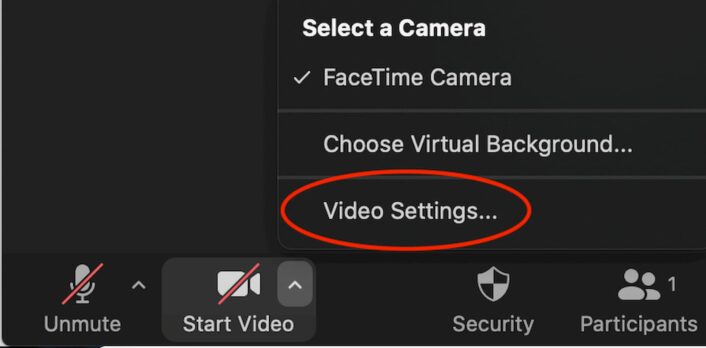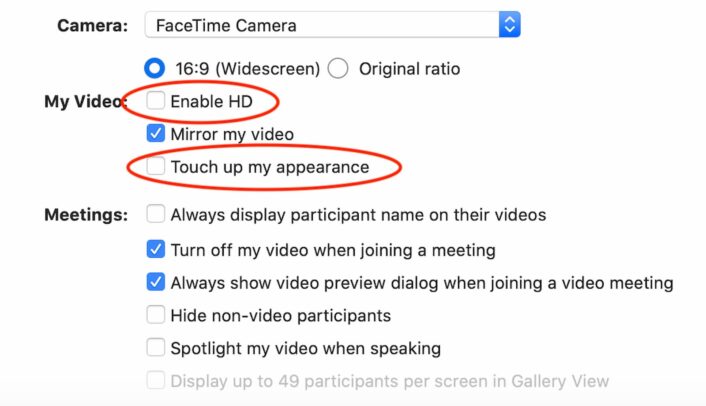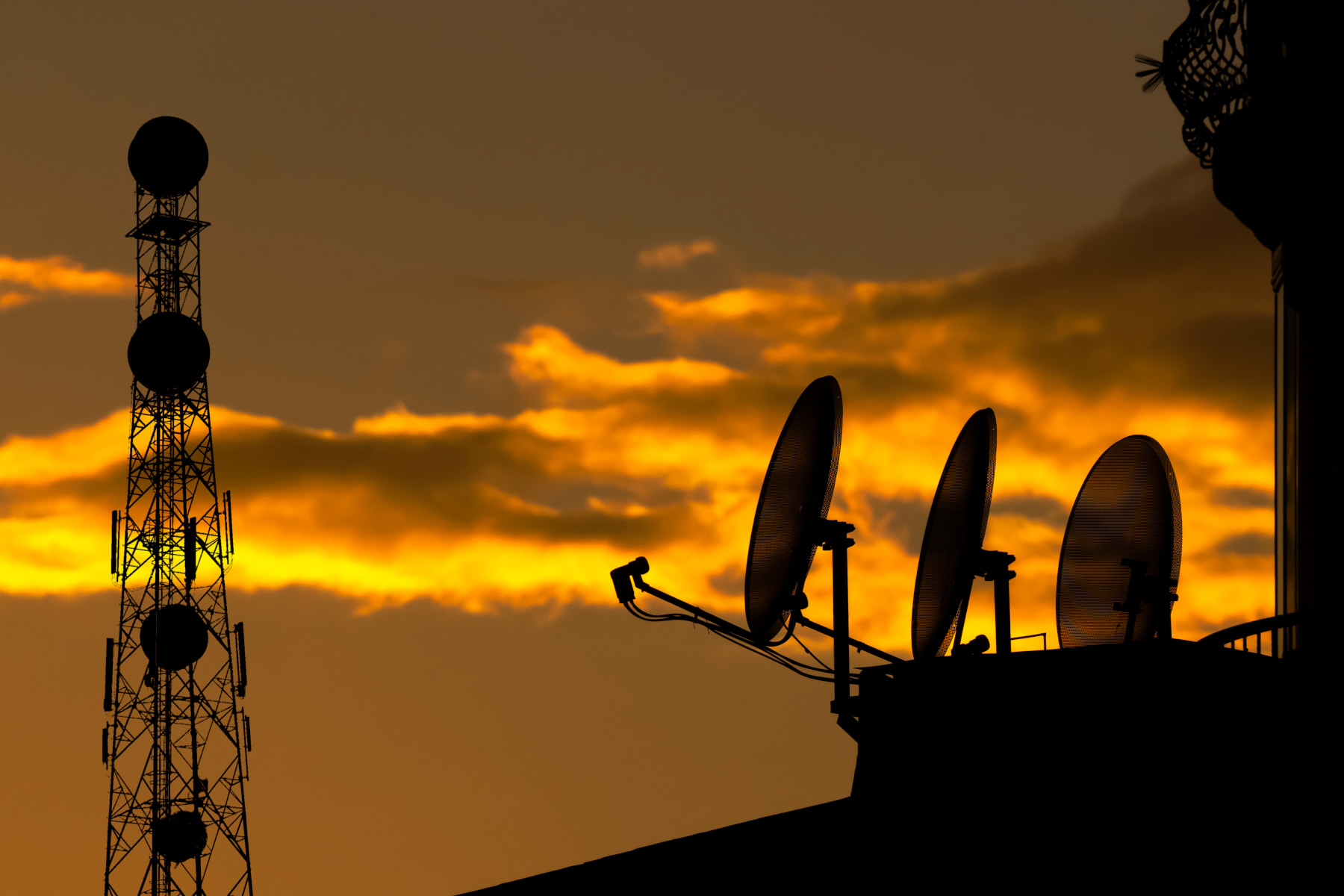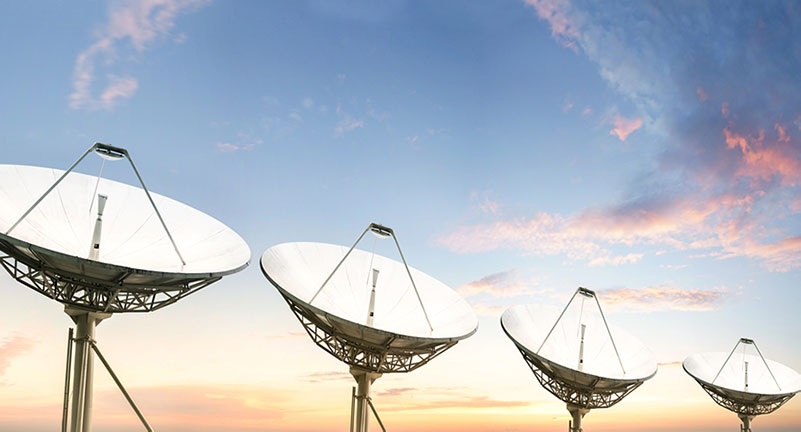This Is the Internet Speed You Need for Zoom
Dec 9, 2022 | Share
Brand Guides, Working Remotely Guides
You can use Zoom even if you have a really slow internet connection. In fact, you can make a group call on Zoom and other video conferencing apps with as little as 1.5 Mbps. Still, faster Wi-Fi always gives you a smoother connection.
See our guide below to learn what internet speed you need for Zoom. We calculated how fast your Wi-Fi should be and have lots of recommendations on how to improve Zoom over a slow connection.
Pro tip:
Not sure if your internet is fast enough for Zoom? Take our speed test to find out.
How much internet speed do you need for Zoom?
You need a minimum internet speed of 0.6–1.5 Mbps to use Zoom.
That’s a baseline estimate, but you might need faster speeds depending on what you’re doing. Group video calls in the highest resolution possible call for at least 2.5 Mbps upload and download speeds—although that’s still not very fast and easy to get from basic home internet plans.
| Activity* | Required internet speed (upload/download) |
|---|---|
| 1:1 video call in “high-quality video” (480p)** | 600 Kbps/600 Kbps (0.6 Mbps) |
| 1:1 video call in 780p HD | 1.2 Mbps/1.2 Mbps |
| Sending and receiving video in 1080p HD | 1.8 Mbps/1.8 Mbps |
| Group video call in 480p SD | 800 Kbps (0.8 Mbps)/1.0 Mbps |
| Group call/gallery view in 720p HD | 1.5 Mbps/1.5 Mbps |
| Sending and receiving group call video in 1080p HD | 2.5 Mbps/3.0 Mbps |
| Screen sharing | 50–150 Kbps (both upload/download) |
| Audio VoiP | 60–80 Kbps (both upload/download) |
| Zoom Phone | 60–100 Kbps (both upload/download) |
*Data from bandwidth requirements listed on Zoom’s website.
**Zoom uses the term “high-quality video,” which doesn’t describe any industry-standard video resolution, but we interpret it to mean standard resolution of 480p.
When you budget out your speed requirements, you need to factor in what else you’re doing while you’re on Zoom. In our own experience, we’ve experienced buffering, delays with video and audio, and other interruptions on Zoom calls with speeds as fast as 15 Mbps.
If you’re using Zoom with the most minimal speeds, make sure to close other applications and tell others in the house to minimize their internet use during your call so you can get a better connection.
How much upload speed do you need for Zoom?
You need around 0.6–1 Mbps of upload speed in order to use Zoom.
Internet plans are measured primarily in download speed since we often consume most of our internet content by downloading it (think streaming video or downloading an attachment in an email). But upload speeds are also important—especially when it comes to Zooming. Watching someone else on Zoom uses download speed while sharing your own video and screen on Zoom uses upload speed.
Upload speeds in most internet packages tend to be significantly slower than download speeds—in the case of cable and DSL packages, your uploads could be up to 10 times slower than your downloads. However, fiber internet often gives you matching download and upload speeds, which makes your Zoom calls go super smoothly.
Pro tip:
Want to really start vrooming when you’re Zooming? Take a look at our guide to the fastest internet providers.
Is your internet fast enough for Zoom?
Your internet is fast enough for Zoom if you have a basic Wi-Fi package on a cable or fiber connection with at least 1.5 Mbps download speeds. You also likely have fast enough speeds if you’re on a DSL or satellite plan, though you may experience slower upload speeds than what would be ideal for a totally smooth Zoom session.
If you compare Zoom’s speed requirements to the speeds you usually get from an internet provider or cellular company, it’s clear that Zoom’s bandwidth requirements are pretty easy to hit.
| Internet connection type | Typical download speed | See more |
|---|---|---|
| Fiber | 100–2,000 Mbps | View Providers |
| Cable | 25–1,000 Mbps | View Providers |
| DSL | 0.5–100 Mbps | View Providers |
| 5G | 40–1,100 Mbps | View Providers |
| 4G LTE | 5–50 Mbps | View Providers |
| Fixed wireless | 5–100 Mbps | View Providers |
| Satellite | 12–100 Mbps | View Providers |
Many cable and fiber internet providers offer Wi-Fi packages with download speeds of 100 Mbps and faster. DSL internet plans fall in the range of anywhere from 0.5–100 Mbps. So, for the most part, it won’t be hard to hit Zoom’s basic internet speed requirements with a cable, fiber, or DSL plan.
However, you may have difficulties if you’re using Zoom over a satellite internet connection. Since it involves streaming video, Zoom consumes a great deal of internet data—and many satellite plans come with fairly strict data caps. Your video might lag a lot over a satellite connection, which has a high degree of latency because the signal is traveling from space.
Pro tip:
See our guide to internet during the coronavirus pandemic for ways to get faster speeds at an affordable rate as we all hunker down to work and study from home.
Internet providers with the best Zoom speeds
There are a lot of internet providers that can get you Zoom’s minimum speeds, but we wanted to highlight some of our favorites. Xfinity is probably your best bet because it has a wide network, incredibly fast speeds, and great customer ratings. But fiber providers like Google Fiber and AT&T give you the added advantage of having very fast upload speeds, ensuring your video feed stays strong.
You can find more great providers on our fastest internet providers guide. Also, make sure to run a search to see which of these providers are available in your area.
Speed requirements for other videoconferencing apps
| App | Min. speed requirement for video calls (download/upload) |
|---|---|
| Skype | 512 Kbps/128 Kbps |
| Slack | 600 Kbps/600 Kbps |
| BlueJeans | 500 Kbps/128 Kbps |
| Cisco Webex | 500 Kbps/500 Kbps |
| Google Meet | 1 Mbps/1 Mbps |
| Microsoft Teams | 1.5 Mbps/1.5 Mbps |
Data from Skype, Slack, BlueJeans, Cisco Webex, Google Meet, and Microsoft Teams speed requirements pages.
You need a minimum of at least 500 Kbps (0.5 Mbps) to make video calls on videoconferencing apps other than Zoom.
The internet speed requirements on apps like Skype, Slack, and Google Meet are pretty much the same as Zoom’s requirements. You don’t need a lot of bandwidth to make the apps work, but a faster internet speed reduces the chance of frustrations like poor connections or dropped calls.
How to troubleshoot your Zoom connection
If your Zoom sessions frequently lag or freeze up, the most likely culprit is your internet connection. It’s difficult and annoying to participate in a Zoom meeting when your internet speed is too slow.
But there are plenty of ways to get better performance, even if you have a relatively slow internet speed.
Close other applications
If you’re on a slow internet connection, multitasking on other applications while Zoom is open can slow down your Zoom connection. To bring your Zoom call back to normal, close out your email, web browser, and any other applications or windows you might have open.
Restart your modem and router
The quickest and easiest way to address slow internet at home is by restarting your modem and router. Unplug both devices from the wall, let them rest for a minute or so, then plug them back in. A simple reset clears away potential bugs and programming cobwebs that may be weighing down your equipment.
Use mobile data or a hotspot
Has your home internet cut out? Simply whip out your cell phone and log on to Zoom with your mobile data. Most cell phones also have a built-in hotspot feature, so if your cellular plan allows it, you can switch on your phone’s hotspot to create Wi-Fi access for your laptop or desktop computer.
Switch off “Enable HD” and “Touch up my appearance”
Zoom’s “Enable HD” and “Touch up my appearance” features both take extra bandwidth and data to function, so you can get better performance by switching them off.
To turn them off, head to the video settings menu by clicking the tiny, upward-pointing arrow next to the Start Video button in the bottom left corner of your screen. There you can click off the check marks on both features.


Turn off the Wi-Fi on other devices
The more people who are using your Wi-Fi connection, the more strain it puts on your home internet speed. If your kids or roommates are streaming video or playing games on their devices while you’re in a Zoom meeting, ask them to switch it off so you can get a better connection.
Pro tip:
Read our guide to internet speed and working from home to get an idea of how much bandwidth you need when you’re teleconferencing and studying in the house.
Move your device closer to your router (or move your router to a better place in your house)
You may be in a part of the house with a Wi-Fi dead zone, where the router’s signal can’t reach your device. If that’s the case, take a seat on a couch or a chair within eyeshot of your router to improve the signal.
To improve the Wi-Fi signal, you could also move your router so it’s in a more centralized position in your house. Place it on a table or shelf, away from metal objects, microwaves, and other obstacles. If your home has multiple floors or a complex layout, consider investing in a mesh wireless system or long-range router.
Connect your internet through Ethernet
Instead of relying on a Wi-Fi signal, you can plug your computer directly into your router with an Ethernet cable. That gives you faster speeds and more reliable performance.
Upgrade your internet plan—or switch providers
If you’re still having trouble, consider calling your internet provider to upgrade your internet speed. Or, if other options are available in your area, you can switch to a new provider that gives you faster speeds and better performance overall.
Type in your zip code below to see what types of Wi-Fi packages are available in your area:
Pro tip:
Is your internet down? Take a gander at our guide to troubleshooting internet to get your Wi-Fi back up and running.
How much data do you need to use Zoom?
| Activity | Amount of data used |
|---|---|
| 1:1 call in “high-quality video” (480p)* | 540 MB/hr. |
| 1:1 video call (720p) | 1.08 GB/hr. |
| 1:1 video call (1080p) | 1.62 GB/hr. |
| Group call in “high-quality video” (480p)* | 810 MB/hr. |
| Group video call (720p) | 1.35 GB/hr. |
| Group video call (1080p) | 2.475 GB/hr. |
| Audio-only VoIP | 27–36 MB/hr. |
| Screen sharing | 22.5 MB/hr. |
| Screen sharing (with thumbnail) | 67.5 MB/hr. |
| Activity | 1:1 call in “high-quality video” (480p)* |
| Amount of data used | 540 MB/hr. |
| Activity | 1:1 video call (720p) |
| Amount of data used | 1.08 GB/hr. |
| Activity | 1:1 video call (1080p) |
| Amount of data used | 1.62 GB/hr. |
| Activity | Group call in “high-quality video” (480p)* |
| Amount of data used | 810 MB/hr. |
| Activity | Group video call (720p) |
| Amount of data used | 1.35 GB/hr. |
| Activity | Group video call (1080p) |
| Amount of data used | 2.475 GB/hr. |
| Activity | Audio-only VoIP |
| Amount of data used | 27–36 MB/hr. |
| Activity | Screen sharing |
| Amount of data used | 22.5 MB/hr. |
| Activity | Screen sharing (with thumbnail) |
| Amount of data used | 67.5 MB/hr. |
*Zoom uses the term “high-quality video,” which doesn’t describe any industry-standard video resolution, but we interpret it to mean standard resolution of 480p.
You need approximately 500 MB to 1 GB of data to have an hour-long video call with one person on Zoom. Group video calls need between 800 MB to over 2 GB of data per hour, depending on the video quality.
Even though using Zoom doesn’t require very fast speeds, it can use quite a bit of your data. Drawing from our knowledge of the difference between megabits and megabytes, we did some calculations to get a baseline estimate. We found that you can end up using anywhere from 0.5 GB to a whopping 2.5 GB per hour on a Zoom call with video enabled.
Pro tip:
Worried about Zooming away your monthly data cap? Read our data caps guide to find internet providers with no caps.
The chart below gives you an idea of some other popular tasks and how much data they devour. Zoom doesn’t appear to need as much as streaming services like Netflix—but keep in mind that your Zoom data usage could vary depending on the internet you have and the device you’re on.
| Activity | Data used* |
|---|---|
| Streaming video in SD | 500 MB/hr. |
| Streaming video in HD | 2 GB/hr. |
| Streaming video in 4K | 8 GB/hr. |
| Gaming on Xbox Live or PS4 | 200 MB/hr. |
| Streaming music | 60 MB/hr. |
| Checking email | 10 MB per 25 emails |
| Downloading a 1 GB file | 1 GB |
| Activity | Streaming video in SD |
| Data used* | 500 MB/hr. |
| Activity | Streaming video in HD |
| Data used* | 2 GB/hr. |
| Activity | Streaming video in 4K |
| Data used* | 8 GB/hr. |
| Activity | Gaming on Xbox Live or PS4 |
| Data used* | 200 MB/hr. |
| Activity | Streaming music |
| Data used* | 60 MB/hr. |
| Activity | Checking email |
| Data used* | 10 MB per 25 emails |
| Activity | Downloading a 1 GB file |
| Data used* | 1 GB |
*Estimates based on Armstrong’s data usage calculator.
How do you use less data on Zoom?
The best way to use less internet data while on a Zoom call is to switch off your video.
If you have strict data restrictions on your internet or mobile plan, using Zoom as an audio-only VoIP service vastly reduces your data usage. By our calculations, voice calls eat up only around 31.5 MB of data per hour—a fraction of how much you would use when your video is switched on. Screen sharing with no video uses 22.5–67.5 MB per hour.
Of course, you won’t have to worry about that if you have unlimited data on your internet or mobile plan. Type in your zip code below to find a provider with all the GB you need.
Zoom FAQ
How do you turn off HD video on Zoom?
You can turn off HD video on Zoom by clicking on the Video Settings menu and checking off the box for HD under the Camera menu. Access Video Settings by clicking on the small, upward-pointing arrow next to the Start Video button at the bottom left corner of your screen.
Is 25 Mbps fast enough for Zoom?
An internet speed of 25 Mbps is fast enough for Zoom. That’s enough bandwidth to support one-on-one calls, group calls, and all other Zoom tasks in HD resolution. If you’re sharing Wi-Fi with four or more people, you may want a faster speed to ensure a smooth Zoom connection.
How much bandwidth does Zoom use?
Zoom requires internet bandwidth of at least 1.5 Mbps to let you make group calls and participate in most other activities. You can use slower speeds for lower-tech tasks like one-on-one video calls and screen sharing, which take only around 0.6 Mbps.
How much data does Zoom use?
Zoom uses up to 1.08 GB of data per hour on group calls with video set to 720p resolution. It uses up to 2.5 GB of data on calls with video set to 1080p resolution, but Zoom uses much less data on calls with SD resolution—only 500 MB per hour. When video is switched off, Zoom uses only about 31.5 MB per hour.
Does Zoom work without Wi-Fi?
You can use Zoom without Wi-Fi by calling into a Zoom meeting with your phone. Your meeting invitation includes a phone number you can call. After that, you get a prompt to enter the meeting ID and the Zoom meeting room’s passcode, which comes in the meeting invite. Read Zoom’s guide on calling into meetings for more information.
If you don’t have Wi-Fi access, you can also use your phone’s mobile data to join a Zoom meeting if you want to participate with your video on—that way you won’t have to log on to a Wi-Fi network. If you’re on a laptop or desktop and you aren’t able to connect over a proper wireless network, you can log on to Zoom through a home internet network connected to a modem or router by Ethernet.
Author - Peter Holslin
Peter Holslin has more than a decade of experience working as a writer and freelance journalist. He graduated with a BA in liberal arts and journalism from New York City’s The New School University in 2008 and went on to contribute to publications like Rolling Stone, VICE, BuzzFeed, and countless others. At HighSpeedInternet.com, he focuses on covering 5G, nerding out about frequency bands and virtual RAN, and producing reviews on emerging services like 5G home internet. He also writes about internet providers and packages, hotspots, VPNs, and Wi-Fi troubleshooting.
Editor - Cara Haynes
Cara Haynes has been editing and writing in the digital space for seven years, and she's edited all things internet for HighSpeedInternet.com for five years. She graduated with a BA in English and a minor in editing from Brigham Young University. When she's not editing, she makes tech accessible through her freelance writing for brands like Pluralsight. She believes no one should feel lost in internet land and that a good internet connection significantly extends your life span.





